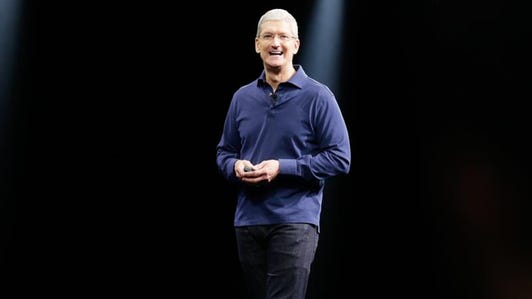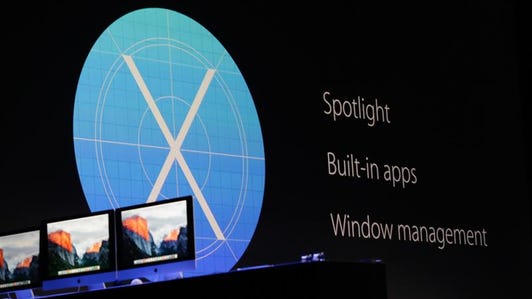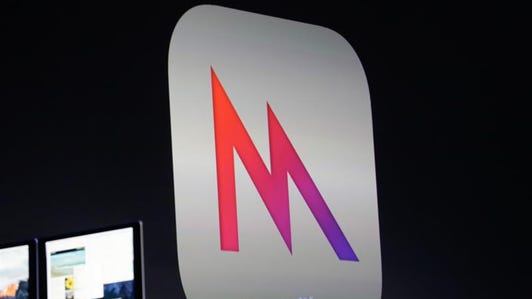This story is part of WWDC 2022, CNET’s complete coverage from and about Apple’s annual developers conference.

James Martin/CNET
Apple wants to control every aspect of your life — as long as you choose to let it.
The company on Monday showed off the newest updates to the software running on its iPhones and iPads, Macs and Apple Watches. One of the key characteristics of Apple’s operating system releases over the past couple years — including iOS 9 and Mac OS X 10.11 El Capitan revealed Monday at its developer conference — is how well the software makes its devices work together.
Last year’s debut of Continuity and Handoff tied the iPhone and Mac computer more closely together, letting people start an email on their smartphone and finish it on their computer or even answer phone calls on their Macs. This year, Apple showed more ways it will extend its reach into our homes and cars, as well as how we listen to music and how we pay for goods.
See also
- The lost year of Beats Music and how that may not matter for Apple
- Apple Music remixes Beats Music, iTunes Radio
- Apple Music vs Spotify: What’s the difference?
- hat’s the deal with Apple Music?: Everything you need to know
It looks like Apple is bringing a whole new level of interconnectivity to our lives. But here’s the catch: if you really want everything to work seamlessly, you’ll have to go all in on the Apple ecosystem. And that doesn’t just mean buying an iPhone and MacBook. You’ll have to look for smart-home products that work with its HomeKit software, drive a CarPlay-compatible automobile and even choose its Apple Music streaming service. The company’s message is clear: it’s Apple’s world; you’re just living in it.
With Apple, “you’re either all in or you’re all out,” said Eric Shapiro, a former Apple executive and current CEO of ArcTouch, a San Francisco app development studio that counts NBC’s “Today Show” and Disney among its clients. “Where Apple will fail is if it doesn’t work and if it’s too hard to use.”
As the battle for the control of your connected life heats up, Apple’s strategy stands in contrast with the other tech giants. While Apple is rallying behind its own products, software and services, Google and Microsoft have embraced a cross-platform world where their services work on virtually anything. That Apple can get away with such a siloed approach is testament to the strength of its early decision to control both the hardware and software aspects of its products and services.
And for Apple, everything it does in software goes back to selling more of its devices — those iPhones, iPads, Macs and now Apple Watches that have made it the most profitable public company ever.
The company declined to comment for this report.
The exception that proves the rule
Not everything about Apple is locked into its own ecosystem. The biggest news from Apple’s keynote Monday was a subscription music service re-emerging after last year’s $3 billion acquisition of Beats. Apple changed how consumers bought music with the launch of the iTunes Music Store in 2003, and it hopes to do it again with Apple Music, a $10-a-month subscription streaming service much like Spotify.
But unlike other Apple services, Apple Music will be available on Android too — the first time the company has created an app for another mobile operating system.
Apple WWDC 2015 keynote (photos)






For Apple, offering its music app on Android isn’t just a continuation of Beats’ prior strategy. Instead, it’s a calculated decision by Apple to hold onto an area it has long controlled — music. It’s also a realization by the company that to truly compete in streaming music, it needs to be on other platforms, not just iOS.
“If and when possible, they (Apple) do try to stick to their own ecosystem,” said Jonas Damon, executive creative director at frog, a global product strategy and design firm that works with clients such as General Electric, Intel and Nike. “When you’re playing in something like that automotive world, it’s easier to partition yourself….But music is one of those areas that is just so pervasive, I think it’s impossible. “
There have been other instances where Apple has gone cross platform. Apple long has offered its QuickTime video player on Windows PCs, iCloud works with Microsoft’s computer operating system, and the 2003 introduction of iTunes on Windows — revealed by then-CEO Steve Jobs in front of a “Hell froze over” sign — is what helped turn Apple into a music and MP3 player powerhouse.
Apple also revealed in March that its ResearchKit software — which was designed to help medical professionals build apps and collect data about patients in an easy, consistent manner — would be open source, as would Swift, the coding language used to make Mac and iOS apps.
“We think Swift is the next big programming language,” Craig Federighi, Apple’s senior vice president of software engineering, said during Monday’s keynote. “We think Swift should be everywhere and used by everyone.”
But as Apple begins to more closely tie its products together, don’t expect it to start opening its arms to fully embrace Android and Windows.
Better with Apple
Apple’s core pitch is that its products work better together. Even though Apple Music will be on Android, there undoubtedly will be plenty of features that make the service better on an iPhone or iPad. For instance, Siri, Apple’s digital voice assistant, will learn that you like to work out in the morning and what type of music you listen to. The next time you plug in your headphones at 7 a.m., Siri will immediately start playing an upbeat workout mix. It’s unlikely that the Google Now voice assistant will integrate with Apple Music in the same way.


Now playing:
Watch this:
Apple Music aims to meet all your music needs
1:36
Siri also has been “learning more about music” in general, as Eddy Cue, head of Apple’s iTunes and other services businesses, pointed out. You’ll be able to ask it to play a specific song or even do something like play the current top 10 alternative songs. You can even ask Siri to do something like play the top song from May 1982 or “play that song from ‘Selma,'” or whatever movie you just saw.
It’s not just music. Apple is trying to stitch together a common experience in the home with HomeKit, which will allow its products to work better with connected household products like light bulbs or window blinds. The company said Monday that the CarPlay element of its iOS 9 software will have tighter integration with vehicles and be able to tap into automotive data. For the first time, your iPhone will be able to connect to the car without a Lightning connector.
Google, by contrast, wants its apps everywhere. It almost doesn’t care what hardware you’re using as long as it’s a Google service you’re accessing. It does keep some software features unique to its Android devices, but most of its apps are available on iPhones and other devices. Likewise, Microsoft has made its most important programs — including Outlook and Office — available to iOS and Android as apps.
So even if it looks like Apple is going more open, its flirtation with other operating systems and decision to give developers a glimpse under the hood is still limited. You’re not going to find Apple’s HealthKit or HomeKit working with Android devices — nor will GarageBand or its other popular apps.
There is one other app Apple will be launching for Android, though. Its second foray in the world of Android app developer is called
— a migration app to help people switch from Android smartphones to the iPhone. “Just download the Move to iOS app to wirelessly switch from your Android device to your new iOS device,” according to Apple. The app will hit the market later this year with iOS 9, with Apple hoping some of those new iOS fans are former Android users.
And that really says it all.



